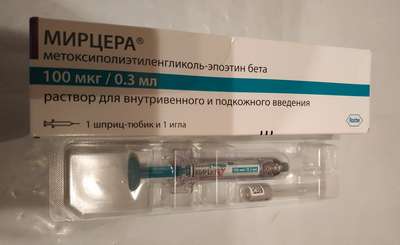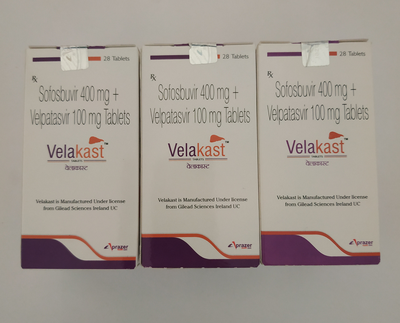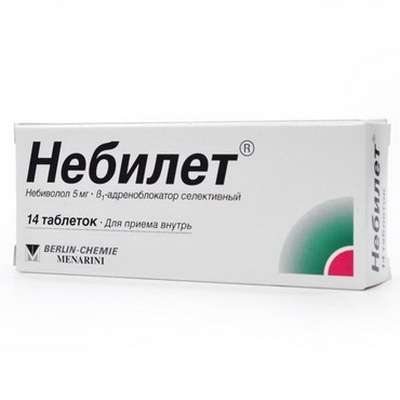Instruction for use: Phezipam
I want this, give me price
Trade name of the drug – Phezipam
Active substance: Bromdihydro-chlorphenyl-benzodiazepine (Bromdihydro-chlorphenyl-benzodiazepinum)
Chemical rational name: 7-Bromo-5- (2-chlorophenyl) -1,3-dihydro-2H-1,4-benzodiazepin-2-one
Dosage Form: tablets
Composition
Bromdihydro-chlorphenyl-benzodiazepine 0.5 mg / 1 mg
Excipients: lactose (milk sugar); potato starch; Medical gelatin; calcium stearate; stearic acid
Description of Phezipam
Tablets are white, flat-cylindrical, with a facet. Anxiolytic of Group Benzodiazepines.
Pharmacotherapeutic group: Anxiolytic (tranquilizer)
ATX Code
N05BX Anxiolytics other
The nosological classification (ICD-10)
F29 Inorganic psychosis Unspecified: Hallucinatory-delusional disorders; Hallucinatory-delusional syndrome; substance-induced psychosis; Manic-delusional disorders; Manic chronic psychosis; Manic psychosis; Acute psychosis; paranoid psychosis; Paranoid psychosis; Subacute psychosis; presenile psychosis; Psychosis; Psychosis intoxication; paranoid psychosis; Psychosis in Children; Childhood Psychosis; Psychomotor agitation in psychosis; Reactive psychosis; Chronic psychoses; Chronic hallucinatory psychosis; Chronic psychosis; Chronic Psychotic Disorder; schizophrenic psychosis.
F40 Phobic anxiety disorders: Obsessive fears; Anxiety neurosis; anxiety neurosis; Night terrors; Acute Anxiety Disorder; Syndrome of paroxysmal fear; state of fear; Fear; Phobias; phobic disorders; Phobia; Feeling of fear.
F41 Other anxiety disorders: anxiety Relief; Nonpsychotic anxiety disorders; An alarm condition; Anxiety; Disturbingly suspicious condition; Chronic anxiety; Sense of anxiety.
F41.9 Anxiety disorder, unspecified: Severe anxiety; neurosis-like symptoms; neurosis-like disorder; neurosis-like state; Neurosis with anxiety symptoms; Neurosis with anxiety; Neurotic disorders with anxiety syndrome; The acute situational stress and anxiety; The acute situational stress anxiety; Acute anxiety attack; Depressed mood with anxiety elements; Psychopathy with a predominance of anxiety and worry; Sudden anxiety; Situational Anxiety Disorder; An anxiety condition; Soest; Anxious-delirium; Disturbingly delusional component; anxiety; Anxiety; anxiety disorder; Anxiety disorders; Anxiety disorders in neurotic and neurosis-like states; Anxiety syndrome; Chronic neurotic anxiety; Sense of anxiety.
F45.2 Hypochondriacal disorder: Asthenic-hypochondriac phenomena; Hypochondriacal-senesto-pathic syndrome; hypochondriacal disorder; hypochondriacal neurosis; Hypochondriacal and asthenic-hypochondriac state; Hypochondria; Senesto-hypochondriacal disorders; Senesto-hypochondriacal disorder.
F48.9 Neurotic disorder, unspecified: Secondary neurotic symptom; Other neurotic state; Neurosis; Neurosis with increased irritability; Neuroses; Neuroses of all kinds; Neuroses with inhibition; neuroses of the heart; Neurotic disorders in alcoholism; Neurotic disorders with inhibition; Neurotic disorders with anxiety syndrome; Neurotic reactions; Neurotic symptoms of alcoholism; Neurotic state; The neurotic syndrome; neurotic disorders; The attack of neurological dysfunction; School neurosis; Emotional stress.
F60.2 antisocial personality disorder: antisocial personality; psychopathic personality; Psychopathy; Psychopathy excitable type; Psychopathy and psychopathic state; Psychopathy hysterical type; Psychopathy with a predominance of anxiety and worry; inhibited personality.
F60.3 Emotionally unstable personality disorder: Change mood; mood variability; mood lability; mood disorders; mood Disorders; Instability emotional background; mood swings; Psychic lability; mood disorders; Mixed emotional disorders; depressed mood; Status of emotional stress; Deteriorating mood; Emotional lability; Emotional tension; Emotional instability; Emotional instability; Emotional shut off; Emotional detachment.
F90 Hyperkinetic disorders: hyperkinesia neurotic; hyperkinesia; hyperkinetic syndrome.
F95 Tics: Children tick; Nervous tics in children.
G40 Epilepsy:Atypical seizures; atonic seizures; Large seizures; Large seizures in children; Large seizures; generalized absence seizures; Jacksonian epilepsy; Diffuse large seizure; diencephalic epilepsy; Cortical and non-convulsive forms of epilepsy; Primary generalized seizures; Primary generalized seizures; Primary generalized seizure; Primary generalized tonic-clonic seizure; Piknoleptic absence; Repeated seizures; Fit generalized; Fit convulsive; Refractory epilepsy in children; Sophisticated seizures; Mixed seizures; Mixed forms of epilepsy; convulsive states; seizures; Spasmodic state; Convulsive forms of epilepsy; Epilepsy grand mal; seizures.
G47.0 Disorders of falling asleep and maintaining sleep [insomnia]: Insomnia; Insomnia, especially difficulty falling asleep; desynchronosis; Prolonged sleep disturbance; Difficulty falling asleep; Short-term and transient insomnia; Short-term and chronic sleep disorders; Short or shallow sleep; Violation of sleep; Disturbed sleep, especially in the phase of falling asleep; Infringements sleep; sleep disturbances; Neurotic sleep disturbance; Shallow superficial sleep; shallow sleep; Poor quality of sleep; Night awakening; sleep Pathology; Postsomnic violation; transient insomnia; Trouble falling asleep; Early awakening; Early morning awakening; Early awakening; sleep disorder; somnipathy; persistent insomnia; difficult to fall asleep; difficulty falling asleep; Difficulty falling asleep in children; persistent insomnia; Worsening sleep; Chronic insomnia; Frequent night and / or early morning awakening; Frequent nocturnal awakening and a sense of the depth of the non-sleep; Night waking.
G90 Disorders of autonomic [autonomous] nervous system: angiodystonia; vasovegetative manifestations; vasomotor dystonia; vegetative dystonia; autonomic dysfunction; vegetative lability; Vegetative-vascular disorders; autonomic dysfunction; Vegetative-vascular dystonia; Vegetative-vascular disorders; vasoneurosis; vegetative-vascular disorders; Dystonia vegetovascular; Dystonia neurocirculatory; neuro disorder; Cardiopsychoneurosis; Neurocirculatory dystonia of hypertensive type; Primary neurovegetative syndrome; The syndrome of vegetative dystonia.
R25.8.0 * hyperkinesia: hyperkinesia rheumatoid; hyperkinesia trochaic; Hyperkinesia central origin; hyperkinesia; Social tremor.
R45.4 Irritability and anger: tantrum; Anger; Dysphoria; Neurosis with increased irritability; exasperation; Increased irritability; Increased irritability of the nervous system; Irritability; Irritability with nervousness; Irritability with psychotic disorders; The symptoms of irritability.
Z100.0 * Anesthesiology and premedication: Anesthesia; Anesthesia in ENT practice; Anaesthesia in Dentistry; Hypotension during spinal anesthesia; ataralgesia; Basic anesthesia; Fast anesthesia; Introduction to anesthesia; Induction; Excitation before surgery; IVL; inhalation anesthesia; Inhalation anesthesia for large and small surgery; Induction and maintenance of general anesthesia; intraligamentarnaya anesthesia; tracheal intubation; Artificial hibernation; cardioplegia; caudal anesthesia; Caudal blockade; mixed anesthesia; Short-term anesthesia; Short-term infiltration anesthesia in surgery; Short-term local anesthesia; Short-term muscle relaxation; Spinal anesthesia; Local anesthesia; Local infiltration anesthesia; Local surface anesthesia; Miorelaxation; Miorelaxation during mechanical ventilation; Miorelaxation during surgery; Miorelaxation in operations; Miorelaxation during mechanical ventilation; monokomponentny anesthesia; nasogastric intubation; anesthesia; Neingalyatsionnyh anesthesia for operative delivery; Immediate pain relief; general anesthesia; General anesthesia with short-term surgical interventions; General anesthesia; Period premedication; Surface anesthesia in ophthalmology; Maintenance of anesthesia; Preoperative period; anocithesia; conduction anesthesia; Regional anesthesia; The relaxation of skeletal muscles; mixed anesthesia; Spinal anesthesia; Spinal anesthesia; permeation anesthesia; Controlled breathing under anesthesia; epidural anesthesia.
Pharmacological Properties of PhezipamPharmachologic effect
Mode of action - an anticonvulsant, anxiolytic, muscle relaxant, hypnotic, sedative.
Pharmacodynamics
It possesses anxiolytic, anticonvulsant, muscle relaxant, sedative and hypnotic effects. It enhances the effect of hypnotics, narcotics, anticonvulsants, and ethyl alcohol. The anxiolytic effect is to reduce the emotional stress, anxiety, weakening, fear, anxiety; sedation - in reducing the symptoms of neurotic origin.
Pharmacokinetics
After oral administration, it is well absorbed from the gastrointestinal tract, the time to reach maximum concentration -. 1-2 hours is metabolized in the liver. The half - 10/06/18 h.
Extract by mainly kidneys as metabolites.
Indications for Phezipam
- various neurotic, neurosis, psychotic, psychopathic and other conditions accompanied by anxiety, fear, increased irritability, tension, and emotional lability;
- reactive psychosis;
- hypochondriacally-senesto-pathic syndrome (including resistant to the action of other anxiolytics);
- autonomic dysfunction;
- Disorder night's sleep;
- prophylaxis of conditions of fear and emotional stress;
- for sedation, including as component induction of anesthesia.
- relief of status epilepticus, serial seizures different etiology;
- treatment of ticks and hyperkinesis;
- muscle stiffness.
Contraindications for Phezipam
- myasthenia gravis;
- expressed human liver and kidneys;
- pregnancy;
Be wary - old age.
Phezipam Dosage and Administration
Inside. Methods of treatment is similar to treatment by other anxiolytics.
A single dose is usually Phezipam 0,0005-0,001 g (0.5-1 mg), and sleep disorders - 0,00025-0,0005 g (0.25-0.5 mg) for 20-30 minutes before bedtime .
For the treatment of neurotic, psychotic states the drug is usually administered in an initial dose of 0,0005-0,001 g (0.5-1 mg) 2-3 times a day. After 2-4 days based on efficacy and tolerability the dose may be increased to 0,004-0,006 g / day (4-6 mg / day), with the morning and afternoon doses are 0,0005-0,001 g, at night - 0 0025, the
In severe agitation, fear, anxiety, treatment is initiated with a dose of 0.003 g / day (3 mg / day), rapidly increasing it to produce a therapeutic effect.
In the treatment of epilepsy the dose is 0,002-0,01 g / day (2-10 mg / day) in 1 reception.
For the treatment of alcohol withdrawal Phezipam prescribe a dose 0,0025-0,005 g / day (2.5-5 mg / day).
In practice, in neurological diseases with increased muscle tone drug administered in a dose of 0.002-0.003 g (2.3 mg), 1 or 2 times per day.
The average daily dose is Phezipam 0,0015-0,005 g (1.5-5 mg), it is separated into 2 or 3 doses, usually 0.5-1 mg - morning and afternoon, and 2.5 mg - overnight. The maximum daily dose - 0.01 g (10 mg).
The duration of treatment in the appointment of the inside - up to 2 months, with a parenteral - up to 3-4 weeks. When you remove the drug dose is reduced gradually. Phezipam is compatible with other drugs (hypnotics, anticonvulsants, etc.), But it should take into account the mutual potentiation of their action.
Side effect of Phezipam
Sometimes there is drowsiness, muscle weakness, possible dizziness, headache, nausea, ataxia, impaired memory and motor coordination (particularly at high doses), drug dependency. May develop allergic reactions (rash, pruritus).
Pregnancy and breast-feeding
Contraindicated during pregnancy.
Overdose of Phezipam
Symptoms: severe drowsiness, prolonged confusion, decreased reflexes, prolonged dysarthria, nystagmus, tremor, bradycardia, dyspnea or shortness of breath, decreased blood pressure, coma.
Treatment: gastric lavage, activated charcoal. Symptomatic therapy (maintenance of respiration and blood pressure), administration of flumazenil (in the hospital). Hemodialysis - is ineffective.
Interaction
It enhances the effect of hypnotics, narcotics and anticonvulsants, ethanol.
SPECIAL INSTRUCTIONS for Phezipam
Contraindicated during transport drivers and other persons performing work that requires quick reactions, precise movements and attention span, so during treatment should refrain from such work.
The frequency and nature of the side effects depend on the individual sensitivity, dosage and duration of treatment. When reducing the dose or discontinuation of Phezipam side effects disappear.
The drug increases the effects of alcohol, so drinking alcohol during treatment Phezipam not recommended.
Storage conditions of Phezipam
In a dry, dark place at a temperature no higher than 25 ° C.
Keep out of the reach of children.
Shelf life
3 years.
Do not use beyond the expiration date printed on the package.
Conditions of supply of pharmacies
On prescription.

 Cart
Cart





